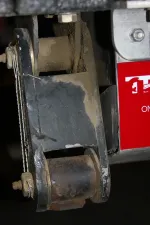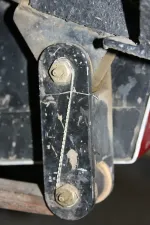shackles
- Posts
- 4,548
- Media
- 1
- Thanks
- 6
- Location
- california
- Vehicle(s)
- 1965 CJ-5 Buick V6 Ford T-18 4-Speed Spicer 20/18,Warn Overdrive Dana 30 & 44 w/Powr-Lok posi / both,4.27 gears 33" tires.
Longer Shackles? Reduced Castor angle yes.........but no one mentioned Pinion Angle..........could also be adversely effected..........bars tying shackles together are OK especially for long ones , but if you want maximum articulation running them as the factory set them up is better..........High energy bushings do a good job, but not over tightened , they need to move.......grease fittings ,Yes or be prepared to take them apart often.







